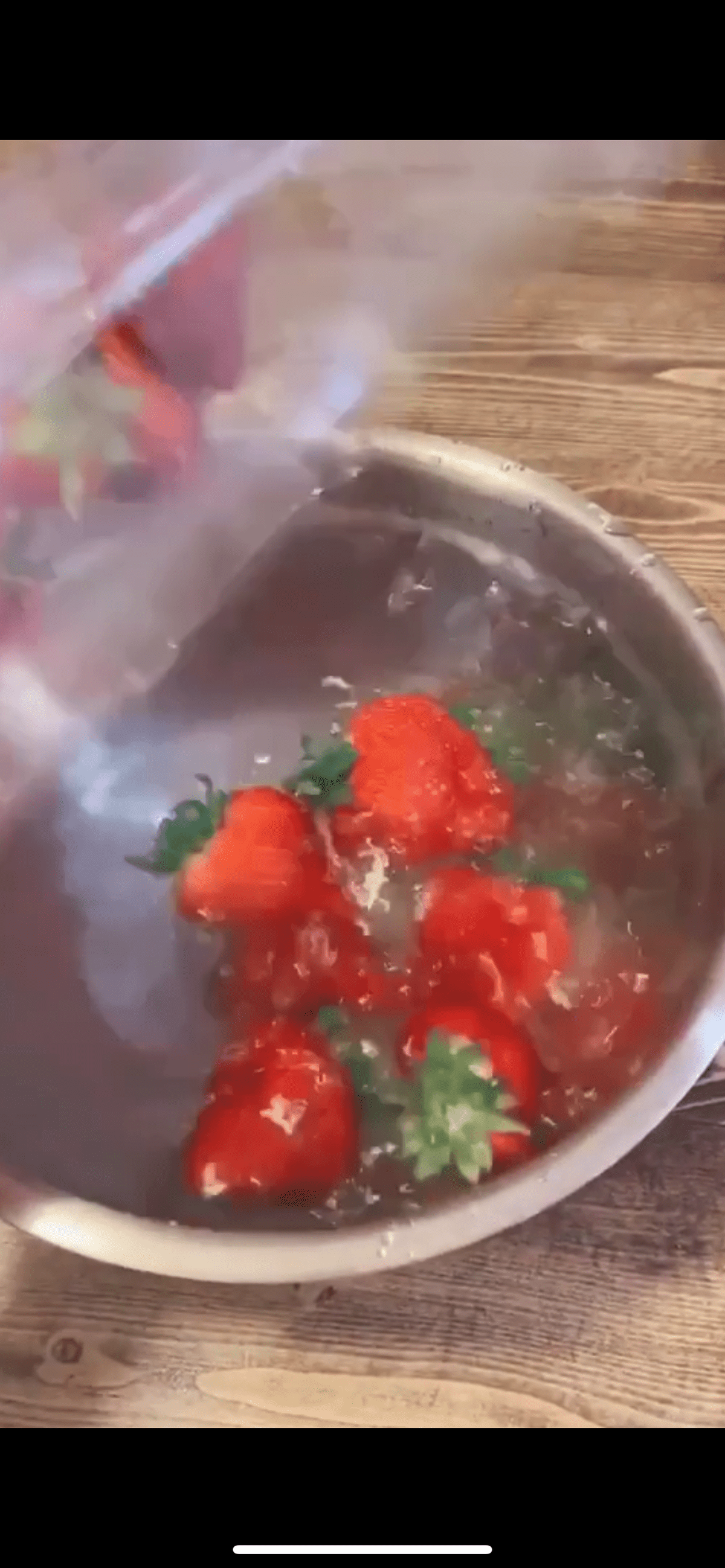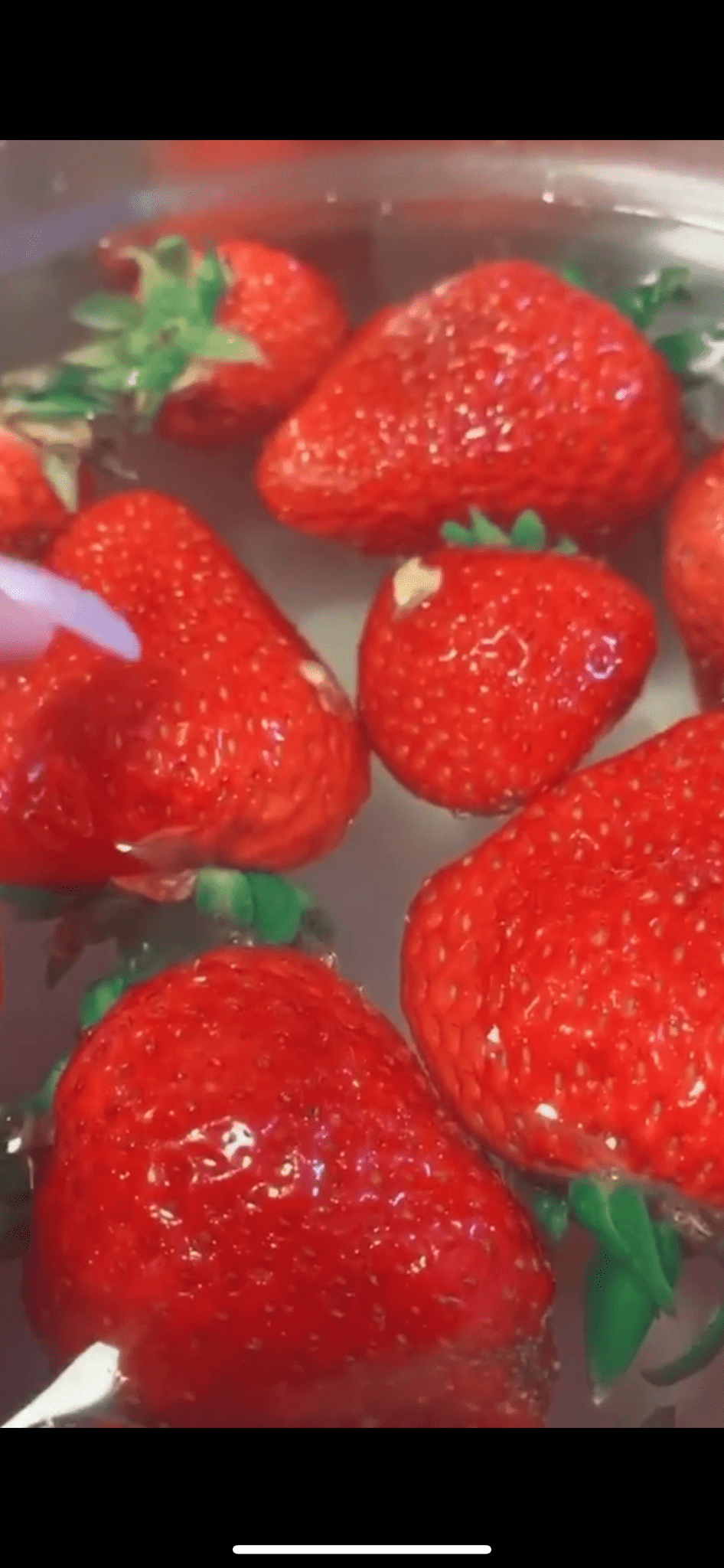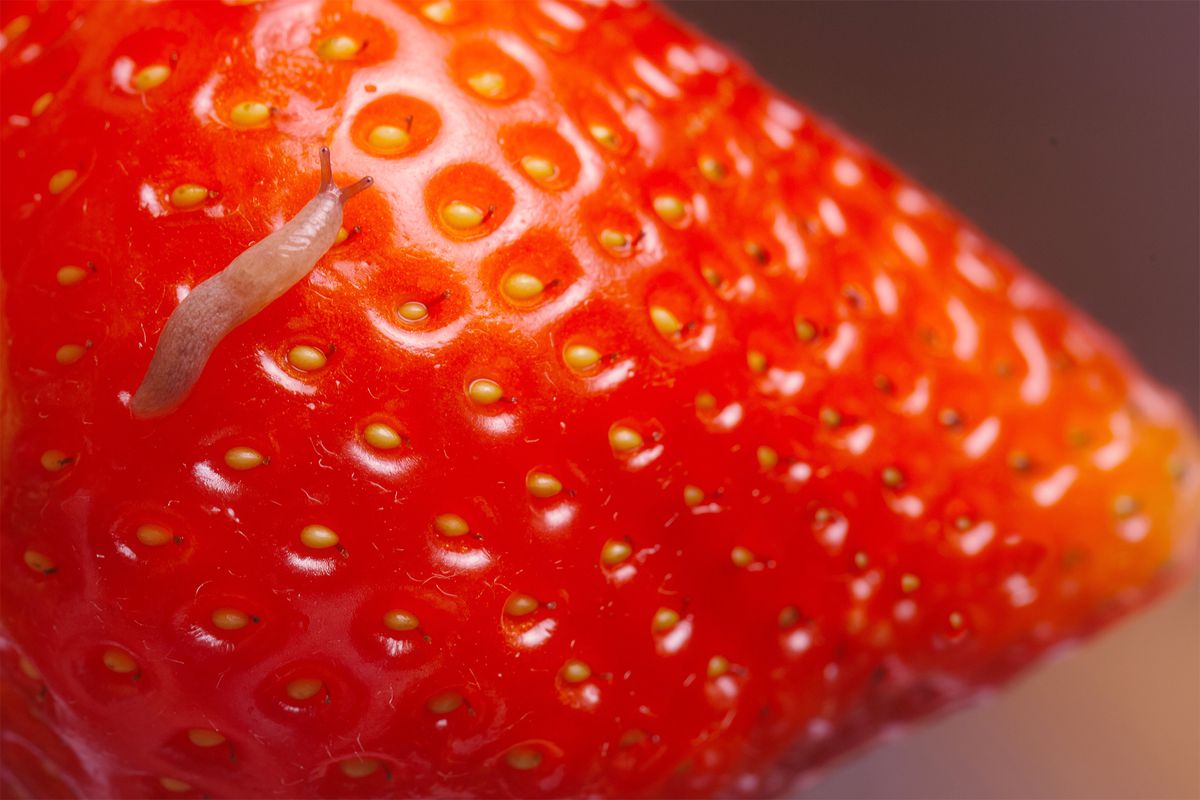A video of worms coming out of strawberries plunged in saltwater is the latest viral sensation to emerge from TikTok. Gross, right?
Unlike so many other clips on the social media platform, this one isn’t a prank—it’s more of a warning. According to TikTokers, you should submerge your strawberries in saltwater to get rid of the bugs. A BuzzFeed writer also gave it a go, leaving fresh strawberries in salted water for about 30 minutes…after which wormlike bugs emerged.
 Strawberry Bugs
Strawberry Bugs  Strawberry Bugs
Strawberry Bugs
The video raises a lot of questions—among them what are these wormy bugs, why are they crawling out of strawberries, and is fresh fruit safe to consume?
Strawberry and small fruit crop entomologist Sriyanka Lahiri, PhD, an assistant professor at the University of Florida, tells Health that the tiny whitish worms are actually the maggots of a fly, commonly known as spotted wing drosophila (SWD). “It’s an invasive species from East Asia that infests berry crops and has been in the USA since 2008,” explains Lahiri.
RELATED: The Health Benefits of Strawberries
What sets the SWD fly apart from the common fruit fly is its ability to lay eggs inside undamaged ripe berry fruits, due to its serrated egg laying device (called an ovipositor). “The female SWD lays eggs inside the ripe fruit, and the resulting maggots hatch and continue feeding inside the fruit,” says Lahiri. “The maggots go largely undetected during harvest. Since common fruit flies can only lay their eggs in softening, damaged, or rotting fruit, the maggots hitchhiking inside fresh-looking fruit definitely belong to the SWD species.”
So why strawberries? The SWD is attracted to yeast and sugar water solution, which is used as a monitoring device in berry production, says Lahiri. In fact, most berry crops are susceptible to SWD. But this doesn’t mean all berries—strawberries included—are hosts for SWD.
RELATED: This Woman Pulled 14 Tiny Worms Out of Her Eye
“There are several other pests, such as thrips, mites, aphids, and armyworms, that cause damage to strawberry plants and fruits," says Lahiri. "If all of these pests are intensively managed, no type of infestation should be a major issue.”
Because nothing can be done after the SWD eggs have been laid inside the ripe, undamaged fruit, pest management focuses on monitoring and preventative control tactics to get rid of the adult flies. “The goal is to not let the females lay eggs on the fruit,” says Lahiri. “Timely picking of ripe fruits, removal of rotting fruits, and burial of damaged fruits are good cultural practices to control SWD, because these flies are attracted to a fermenting fruity smell.”
She strongly recommends washing strawberries—and all other fresh fruits and vegetables—before eating them. However, since the maggots live deep inside the fruit, washing won’t get rid of them entirely. “Staying submerged in water might force a few of them out,” says Lahiri. Incidentally, she isn’t aware of any benefits of adding salt to the water, as it was in the TikTok video, although she hasn’t conducted any research to that end. “Also, I am not sure the fresh strawberry taste will remain the same after being submerged in saltwater for too long,” she adds.
RELATED: Two Maggots Burrowed in This Woman's Scalp While She Was on Vacation—Here's How That Happens
There’s no proof that consuming a few maggots with your fruit has any negative health effects—and people have probably been doing it for centuries. So try to forget everything you’ve just read and carry on eating them.
“Although the sight of translucent worms crawling out of a fresh strawberry fruit might not be appealing, there are no known ill effects of eating them,” says Lahiri. “In fact, if you accidentally consumed some maggots, all you did was get some extra animal protein in your salad or fruit shake.”
The reality is that in most cases, fresh market produce and stored grains have some amount of insect infestation that is impossible to get rid of. The Food and Drug Administration (FDA) even has contamination guidelines for each type of food—including how many bugs or how much mold is allowed to be inside the foods (although there doesn’t seem to be anything on the FDA website concerning bugs inside strawberries).
“We would need an insane amount of pesticides to follow a zero maggot/grub tolerance policy in our food, which is neither environmentally friendly nor beneficial for human health,” explains Lahiri. “Having pesticide residue on our food versus having to ingest some extra animal protein can be considered as a fair trade-off.”
To get our top stories delivered to your inbox, sign up for the Healthy Living newsletter
